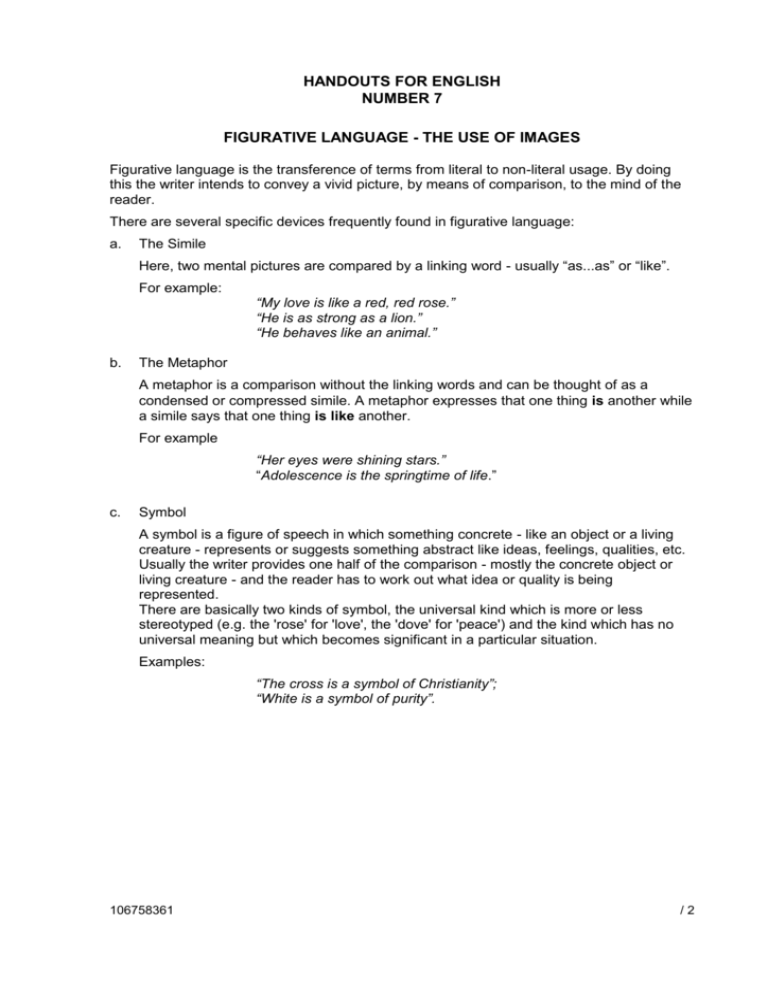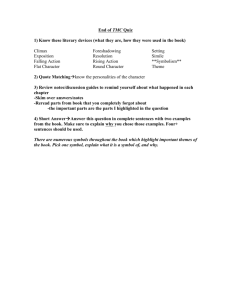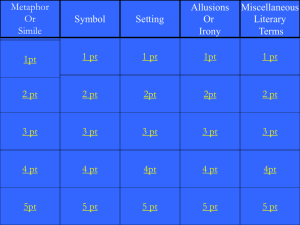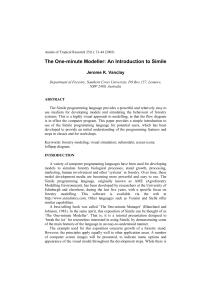Figurative Language - The Use of Images - schule.bbs
advertisement

HANDOUTS FOR ENGLISH NUMBER 7 FIGURATIVE LANGUAGE - THE USE OF IMAGES Figurative language is the transference of terms from literal to non-literal usage. By doing this the writer intends to convey a vivid picture, by means of comparison, to the mind of the reader. There are several specific devices frequently found in figurative language: a. The Simile Here, two mental pictures are compared by a linking word - usually “as...as” or “like”. For example: “My love is like a red, red rose.” “He is as strong as a lion.” “He behaves like an animal.” b. The Metaphor A metaphor is a comparison without the linking words and can be thought of as a condensed or compressed simile. A metaphor expresses that one thing is another while a simile says that one thing is like another. For example “Her eyes were shining stars.” “Adolescence is the springtime of life.” c. Symbol A symbol is a figure of speech in which something concrete - like an object or a living creature - represents or suggests something abstract like ideas, feelings, qualities, etc. Usually the writer provides one half of the comparison - mostly the concrete object or living creature - and the reader has to work out what idea or quality is being represented. There are basically two kinds of symbol, the universal kind which is more or less stereotyped (e.g. the 'rose' for 'love', the 'dove' for 'peace') and the kind which has no universal meaning but which becomes significant in a particular situation. Examples: “The cross is a symbol of Christianity”; “White is a symbol of purity”. 106758361 /2 -2SOME USEFUL PHASES General The imagery used / employed conveys / paints The author employs / makes use of / paints optical / auditory / tactual / They fit into the context/ are appropriate. a vivid picture. images SIMILES X is like Y / as .... as ....Y The author uses / employs a simile (in order ) to..... It (i.e. the symbol) nature / is taken from science / the field of ... The simile indicates / suggests / implies / illustrates (something) / that... uses / employs metaphors. / metaphorical language. METAPHORS The author The metaphor embodies / “gobbles his food” calls up a sense of / calls forth associations of an animal eating. “Gobble” is used metaphorically to represent an animal's eating habits. SYMBOLS A symbol represents / stands for an idea. / an abstraction. It conveys / communicates abstract ideas. / abstract conceptions. A symbolises / is a symbol for / is symbolic of / serves as a symbol for / of B. 106758361 /3 3 106758361







